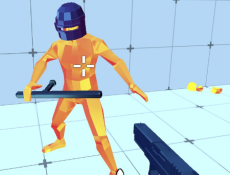

Fighting Games
Fighting games center around close combat between a limited number of characters, in a restricted space and often one-on-one. These games emphasize player skill, requiring quick reflexes, memorization of complex combos, and an understanding of the unique fighting style of each character. Players must outmaneuver their opponents, exploit weaknesses, and strategically manage their resources, such as health and special move meters, to emerge victorious. The intense, fast-paced nature of these games makes them both thrilling to play and exciting to watch, contributing to their popularity in competitive gaming circuits.
Deep Mechanics and Character Mastery
The depth of fighting games comes from their complex mechanics and the wide range of character abilities. Each character typically has a unique set of moves that includes basic attacks, special moves, and potentially game-changing ultimate abilities. Mastery involves knowing your character’s moveset and understanding how to read the opponent’s strategy and adapting in real-time. This high level of strategic depth requires players to practice and refine their skills continually, rewarding dedication with a noticeable improvement in gameplay.
Features That Define Fighting Games
Key features common in fighting games include:
- Diverse character roster: Each with unique abilities, strengths, and weaknesses.
- Combo systems: Complex sequences of attacks that players must execute with precise timing.
- Blocking and counter systems: Mechanisms that add a layer of strategy to defense and attack.
- Tiered competitive play: Ranked matches that help players gauge their skill against others.
- Training modes: Allow players to practice moves and combos without the pressure of a real match.
These features ensure that fighting games remain engaging, providing players with a platform to test their skills against others in a highly competitive environment. The genre is known for its vibrant community and the camaraderie that develops through mutual respect for the skills and dedication required to excel. Whether at a casual level or in professional arenas, fighting games offer a dynamic and rewarding experience for players looking to challenge themselves.

































